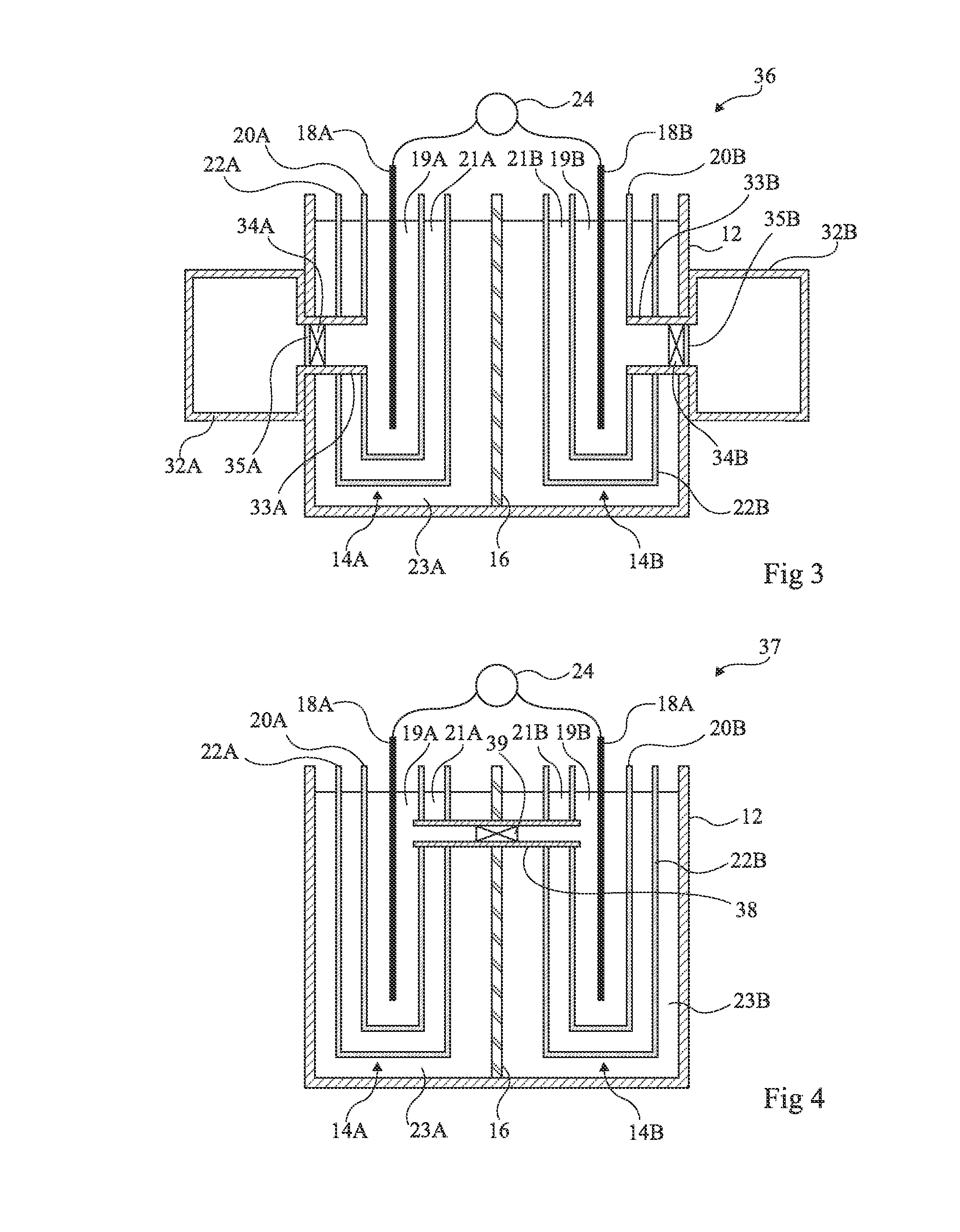Bio-battery with enhanced yield
a bio-battery and enhanced yield technology, applied in the field of bio-fuel cells, can solve the problems of complex systems, difficult to obtain a bio-fuel cell of high efficiency, and parasitic reaction at the anod
- Summary
- Abstract
- Description
- Claims
- Application Information
AI Technical Summary
Benefits of technology
Problems solved by technology
Method used
Image
Examples
Embodiment Construction
[0033]For clarity, the same elements have been designated with the same reference numerals in the different drawings.
[0034]In a conventional biofuel cell, the electrons captured by the anode electrode directly originate from the oxidation of a biodegradable substrate by an enzyme (with a redox mediator possibly standing as an interface with the electrode).
[0035]The principle of the biofuel cell according to the present invention is to use the reaction of substrate degradation by the enzyme or by the microorganism, no longer directly to generate the electrons captured by the anode electrode, but rather to promote the creation or the maintaining of a potential difference between the anode and cathode electrodes.
[0036]According to an embodiment of a biofuel cell according to the invention, the substrate degradation is used to obtain a pH difference between the anode and the cathode and one or several redox couples having their redox potentials varying according to the pH are used at th...
PUM
| Property | Measurement | Unit |
|---|---|---|
| pH | aaaaa | aaaaa |
| volume | aaaaa | aaaaa |
| enzyme activity | aaaaa | aaaaa |
Abstract
Description
Claims
Application Information
 Login to View More
Login to View More - R&D
- Intellectual Property
- Life Sciences
- Materials
- Tech Scout
- Unparalleled Data Quality
- Higher Quality Content
- 60% Fewer Hallucinations
Browse by: Latest US Patents, China's latest patents, Technical Efficacy Thesaurus, Application Domain, Technology Topic, Popular Technical Reports.
© 2025 PatSnap. All rights reserved.Legal|Privacy policy|Modern Slavery Act Transparency Statement|Sitemap|About US| Contact US: help@patsnap.com



